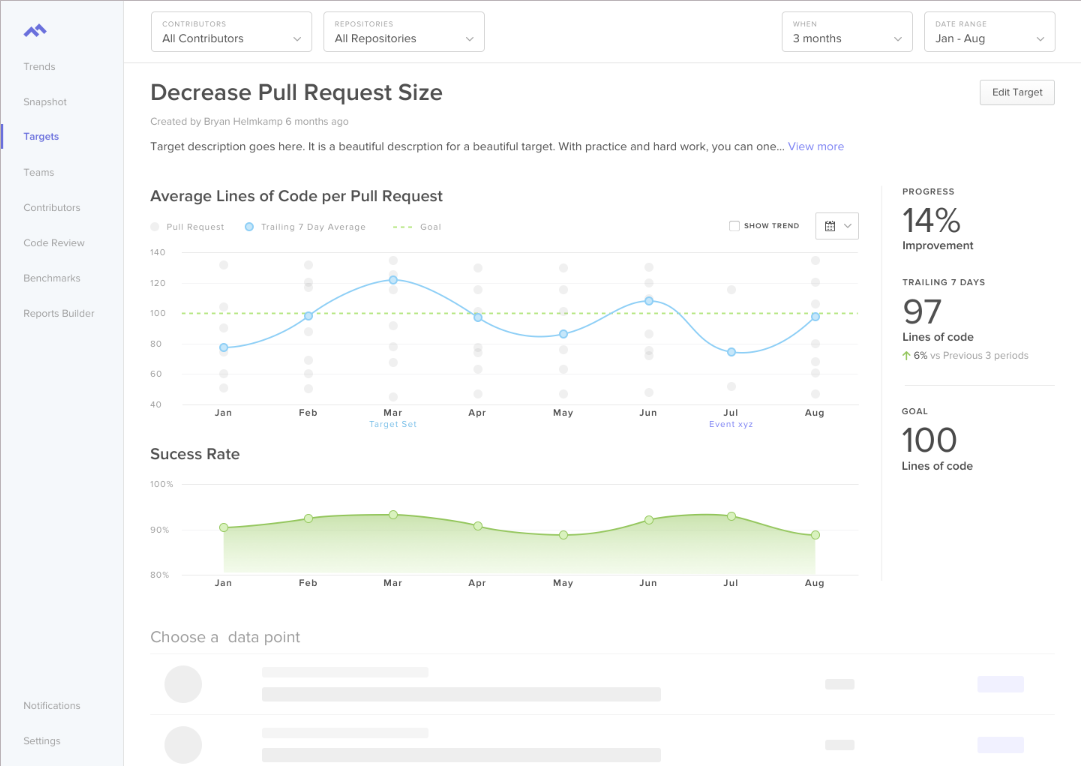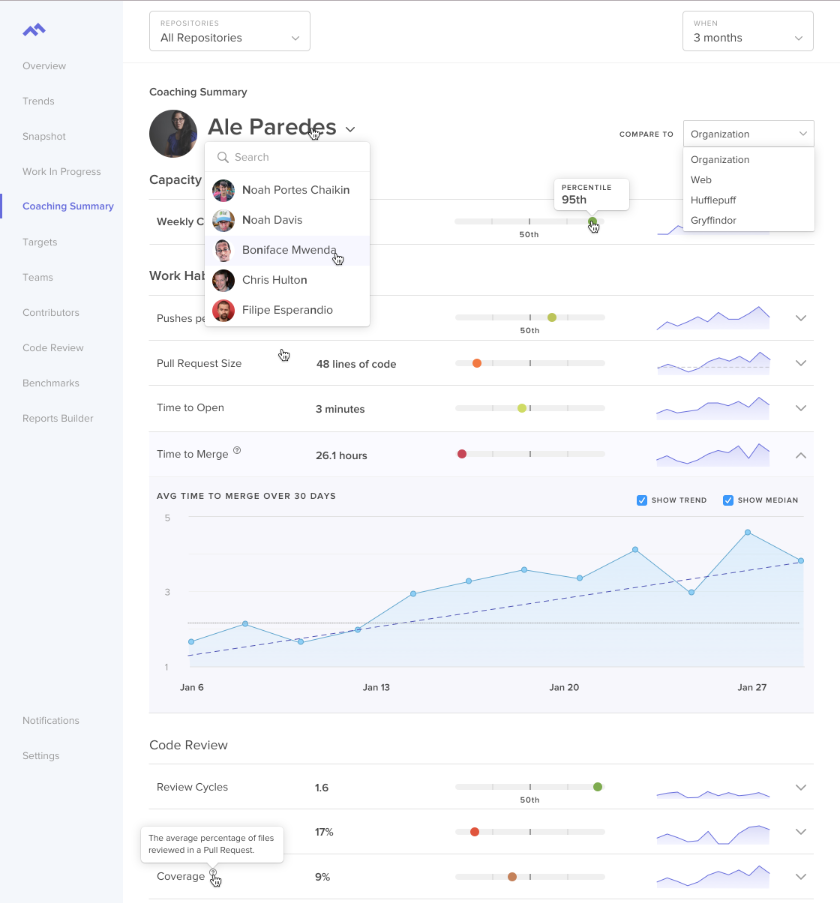I love using pull requests as a unit of work. This Velocity metric is a real measure, not an abstraction.
Results
Data drives concrete improvement.
26% increase in Pull Requests Merged
45% decrease in Cycle Time
42% decrease in Pull Request Size.

Team leaders look at Velocity together every two weeks to see where the team is doing well and where there are further opportunities for improvement. Once goals are set, individual engineers get daily emails summarizing any pull requests that are outside of the targets set. This gives everyone, from individual contributors to team leads to engineering managers an opportunity to improve the team.
Favorite Reports
← →

